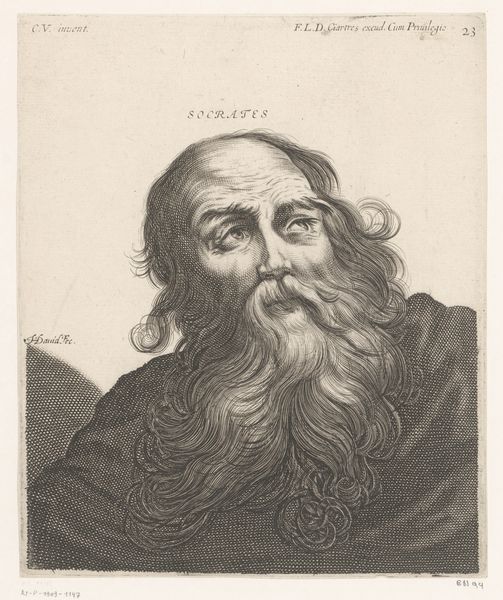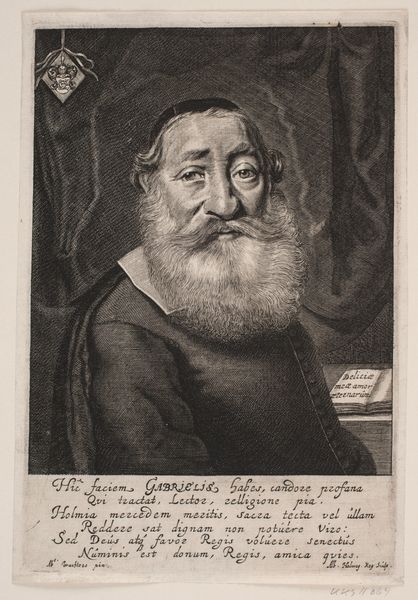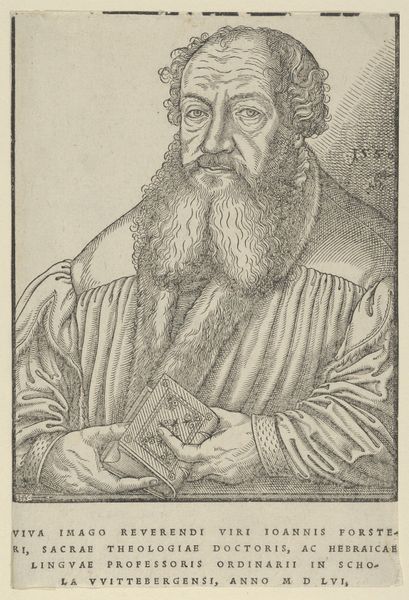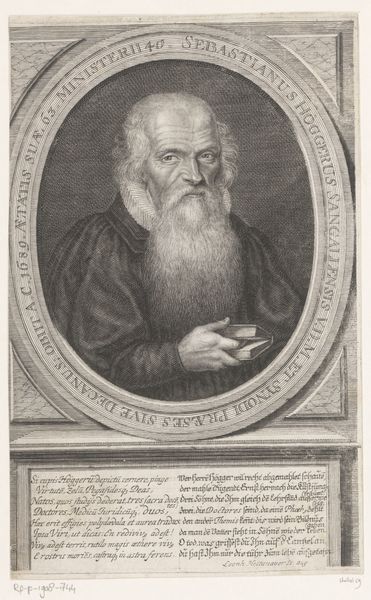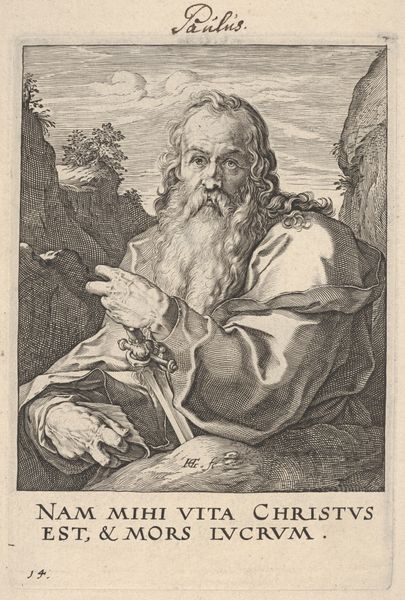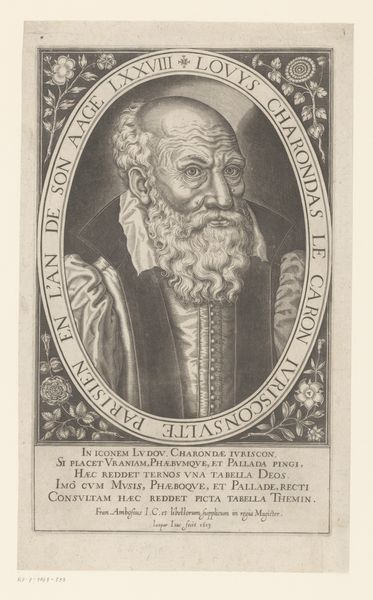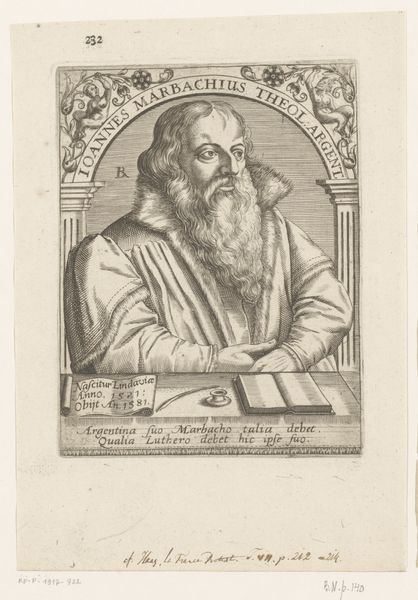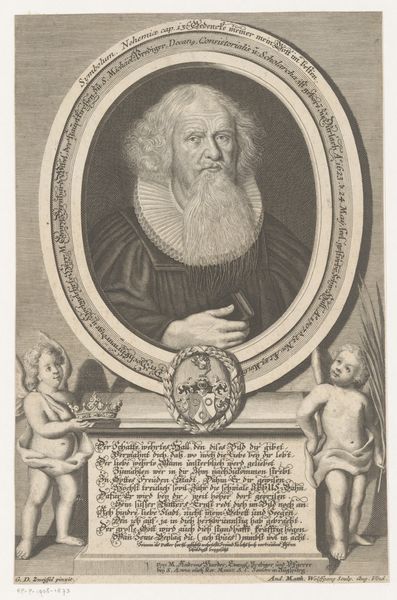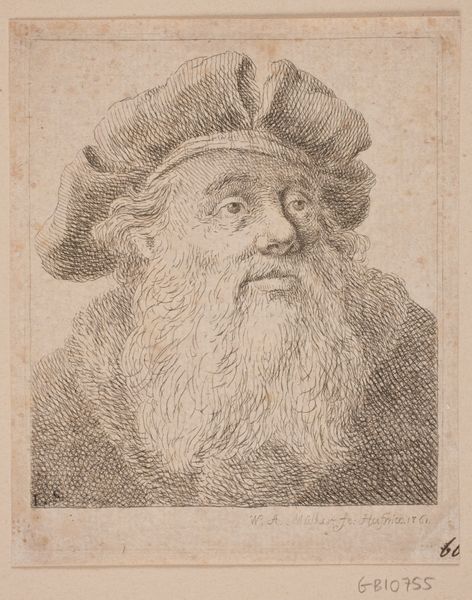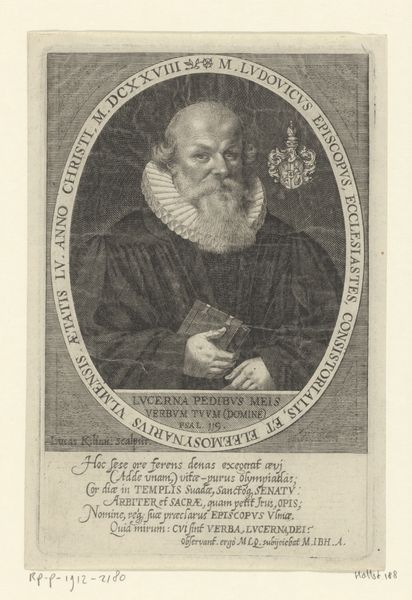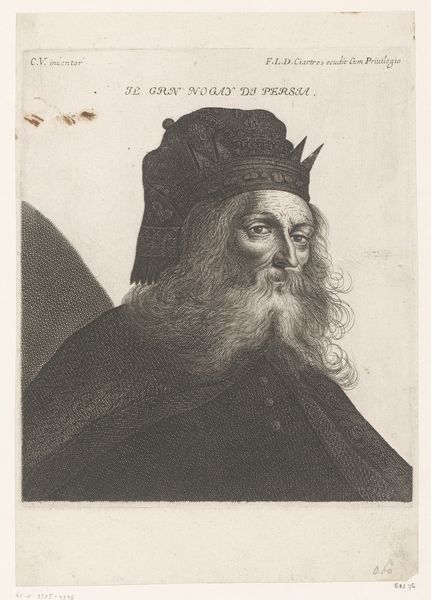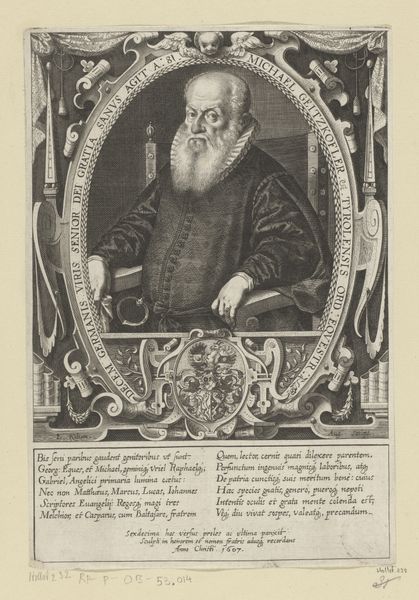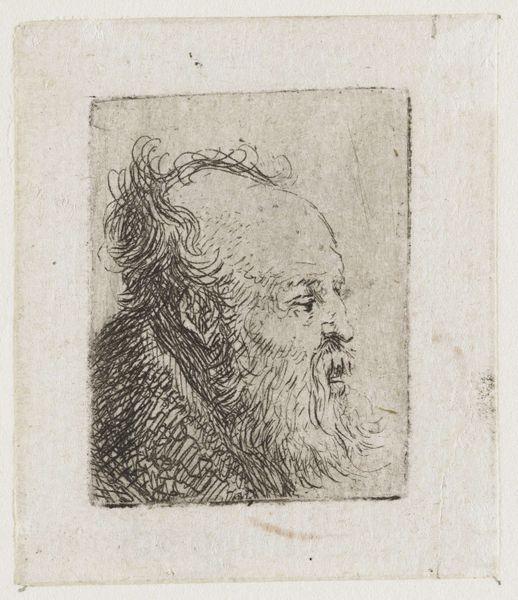
engraving
#
portrait
#
baroque
#
old engraving style
#
figuration
#
portrait reference
#
limited contrast and shading
#
line
#
portrait drawing
#
history-painting
#
engraving
Dimensions: height 206 mm, width 179 mm
Copyright: Rijks Museum: Open Domain
Curator: Welcome to the Rijksmuseum. Today, we’re looking at "Portret van Diogenes van Sinope," an engraving made sometime between 1615 and 1647 by Jerôme David. Editor: It strikes me immediately as somber. The lines are so precise, and the contrast emphasizes the figure’s downward gaze. It feels very introspective, even burdened. Curator: Engravings such as this one had a significant function. Consider that, before photography, prints like these served as vital means of circulating images of historical figures to a wider public. It facilitated the distribution of knowledge and ideas. Editor: Absolutely. Looking at the cross-hatching, it’s fascinating how the artist suggests form and volume with such meticulous application of line. Notice, too, how the light catches the subject's brow—there is subtle shading suggesting thoughtful wisdom. Curator: Right, and we should also consider the skilled labor that created this work. This wasn't some quickly dashed-off sketch. The process of engraving into a copperplate demands precision and time. Moreover, consider the paper itself. Its quality and availability speak to a particular level of consumption and access within the art market. Editor: Indeed, and from a formalist perspective, the composition is striking. Diogenes dominates the space, yet his averted gaze directs our own. The artist masterfully guides our sight with tonal and directional elements. The textured beard and hair juxtapose the smoother skin, drawing the eye around the face, capturing every line etched into his countenance. Curator: Understanding the context of production reminds us this wasn't just a disembodied artistic statement but a commodity produced by someone, distributed, and consumed by others, revealing a glimpse into a complex social and economic environment. Editor: Agreed. I feel like I can almost hear the scratching of the burin on the plate when studying this piece. Thank you, this work really provides a lot to think about when it comes to our visual inheritance from the past. Curator: Certainly, it prompts us to consider both the aesthetic value and the material realities behind image production in the early modern era. A great piece to ponder.
Comments
No comments
Be the first to comment and join the conversation on the ultimate creative platform.
